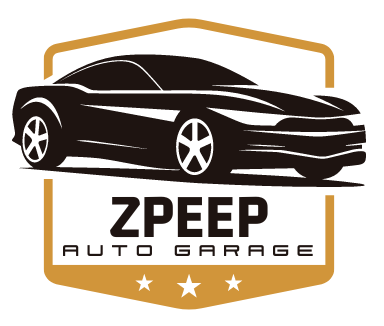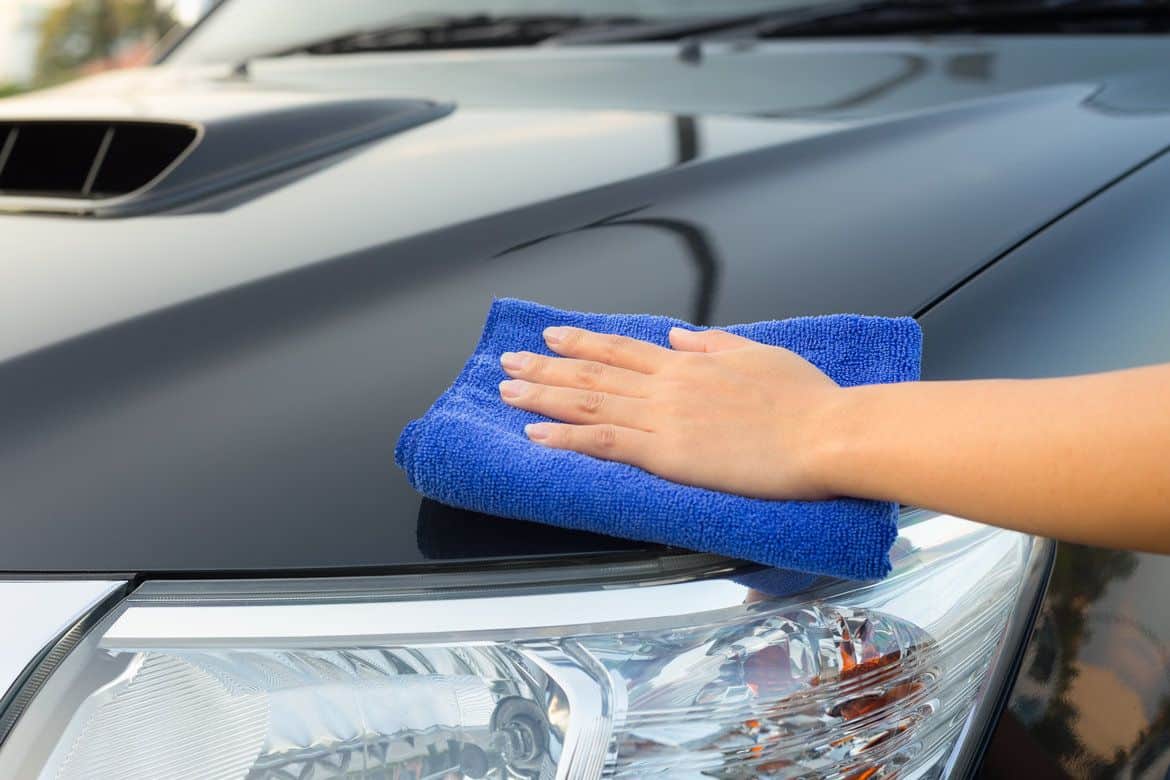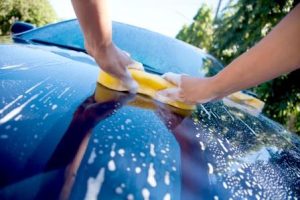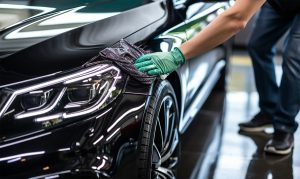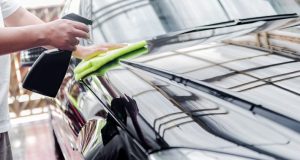There aren’t many car care routines as important as waxing. Not only does it make your car look better, but it also provides important weather protection, keeping the paint looking good for years to come.
Material collection
It is crucial that you purchase the necessary supplies before beginning the waxing process. You’ll need a few basic supplies, like a foam applicator, microfiber cloths, and mild car wash soap. For a more complete clean and wax, consider investing in additional accessories, such as a clay bar and detail brush.
Setup phase
Start by thoroughly cleaning your car to ensure the best results. Remove all dirt and grime from the surface, paying particular attention to areas where it tends to accumulate. Take this opportunity to inspect your car for any damage or defects that may require extra care during waxing.
Choose the best surface treatment
The quality of the car wax you use can have a big impact on the effectiveness of your DIY car wash job. Not all waxes are equal. When choosing the right wax for your car, consider factors such as the type of paint finish, the level of protection required and ease of use.
Technology application
Professional results require mastery of the waxing process. Follow the manufacturer’s instructions carefully, as different waxes require different application techniques. To ensure even coverage and avoid streaks or buildup, always work in small, manageable spots.
Teaching guide
Once you’ve gathered your materials and prepped your car, you’re ready to start waxing. Divide your car into usable parts, such as the sides, roof and hood. Apply a small amount of wax to the foam applicator and apply in a circular motion, overlapping slightly with each application as you work it over the surface.
wearing and polishing
When the wax dries to a mist, wipe away the excess wax to reveal the beautiful shine underneath. Gently wipe the waxed surface with a clean microfiber cloth, using circular motions with light pressure. For a very smooth surface, consider using another microfiber cloth for polishing.
Treating a freshly washed vehicle
Congratulations on a job well done waxing your car! Now is the time to properly maintain your newly waxed surface to extend its life. To allow the wax to fully harden, do not wash your car for at least 24 hours and be careful with abrasive or strong chemicals that can damage the wax.
Solving typical problems
Sometimes even the most seasoned waxers encounter problems. Don’t panic if you see streaks, uneven application, or other imperfections. There are more options, including spotting problem areas with a clay bar or using a detailing spray to gently remove excess wax.
Regular waxing has benefits
Regular waxing not only protects your investment, it also keeps your exterior looking shiny. Waxing can extend the life and value of your car’s paint and top coat by creating a strong barrier against dirt, moisture and UV rays.
When to wax?
When should I wax my car? There is no magic cure, but for optimal protection, experts generally recommend waxing every three to six months. However, the frequency of waxing can be affected by factors such as weather, driving habits and the type of wax used.
Add tips and techniques
For those who want to do their own waxing, here are some insider tips. To prevent the wax from drying out too quickly, you can apply it in a cool place. Don’t be afraid to try different application methods to see what works best for you.
Safety precautions
Most importantly, safety should always come first when waxing. Working in bright sunlight or very cold weather can reduce the performance of the wax and increase the chance of damage. When working with chemicals, always wear safety equipment such as gloves and goggles.
Cost comparison of using expert resins
While professional waxing services undoubtedly have benefits, do-it-yourself waxing is an affordable alternative for those willing to invest the time and effort. By using high-quality materials and learning the methods described in this book, you can achieve professional-looking results at a much lower cost.
FAQs
Should I block it with clay before waxing?
Even if clay blocking is not strictly required before waxing, it can help remove stubborn impurities and smooth the surface of the wax. If you see rough or rough spots on the paint, consider blocking your car with clay.
Are car polishing and waxing different things?
In fact, car wax and polish serve different purposes. The purpose of polishing is to remove small scratches and curl marks and restore the clarity and smoothness of the paint, while the wax is mainly used to protect and add shine to the paint.
How often should I polish my car?
Climate, driving conditions and the type of wax used can all affect the frequency of waxing. For optimal protection and shine, you typically wax your car every three to six months.
